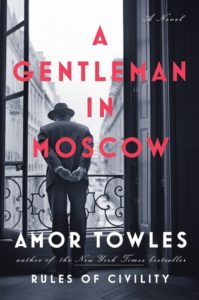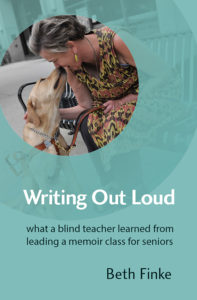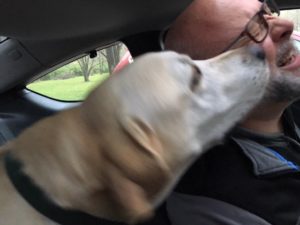Mondays with Mike: The grand dames of Moscow, Milwaukee and Michigan Avenue
November 20, 2017 • 6 Comments • Posted in Mondays with Mike, travelBeth’s a voracious book listener, and as she’s mentioned before, I end up hearing large parts of lots of her books—if I want to, anyway. She usually falls asleep each night listening. If it’s something I like, she places her little audio device so we both can hear it as we fall out. If not, she puts it under her pillow—she can hear it, I can’t.
Lately it’s been something I like, a lot. It’s fiction called “A Gentleman in Moscow.” In short, a Tsarist aristocrat is confined during the Russian Revolution to house arrest in Moscow’s grand dame hotel named The Metropol (a real hotel back then and today). A little far-fetched but it works. It touches on Russian history—and although it’s no textbook—by my reckoning it’s accurate. Which is not saying all that much—but I took Russian in college and realized then that we Americans are painfully ignorant of Russia’s epic history, and like back when I was in college, Russian history is kind of worth knowing these days.
The book’s just extremely well written, great characters, great dialog, witty and funny. And the great old hotel is something of its own character. Which alone gives the book a couple stars in Beth’s review. Regular readers know that for Beth Finke, heaven is a well-laid-out, compact hotel room. In that room is a closet with complimentary bathrobes. And next to Beth’s side of the bed is a nightstand with a drawer. I’ve taken to calling it Beth’s squirrel drawer, because all I see is a mess of lozenges, chewing gum packages, and insulin pens—but for her, it’s perfect.

The Hilton’s one honkin’ hotel.
We’ve written about The Pfister Hotel in Milwaukee, where they immediately greet Beth as we walk into the lobby. “Hello Ms. Finke!” Staff hands her key cards that have already had the corner snipped off so Beth knows how to orient the card in the door lock slot. They leave rubber bands in the room—Beth uses them to identify things. Staff doesn’t say much to the guy carrying the bags. But I’ll take it.
A nice hotel is a refuge, an oasis of a kind. It’s a different state of mind. Hotels—especially the big conference ones—are like little cities, subcultures all their own.
Beth and I both belong to the gym at the Hilton Towers on South Michigan Avenue—for those of a certain age, that would be the 1968 Democratic Convention Hilton. But it’s a lot more than that—Queen Elizabeth and Elizabeth Taylor and presidents, not to mention Harrison Ford and the rest of the cast of “The Fugitive”—have spent a lot of quality time there.
I don’t believe I’ve ever actually stayed overnight there. But as a kid growing up, and now as an adult, it’s my epitome of a big old hotel. For gym members like us, it’s always fun to try to figure out what conferences are there. How busy the gym is on a given day is often a hint—when it’s a conclave of physical therapists, for example, it’s hard to find an empty treadmill or a swim lane. Sometimes you can smell the seriousness—the frolicking radiologists are in town! And sometimes you can smell the money—pharmaceutical sales people everywhere.
Sometimes it’s scary numbers of awkward teenagers there for a youth convention, waiting around in awkward stances to be told what they’re doing next. Sometimes it’s a sports team convention with everyone decked out in fan garb and one time, it was the International Leather Convention. Can’t tell you much about that, as that group takes over the entire hotel so as not to scandalize unwitting guests. I did hear stories, though.
So, there you have it: Bolshevik Russia, Milwaukee, and a gym in the Hilton Towers.
My mind wanders sometimes.



